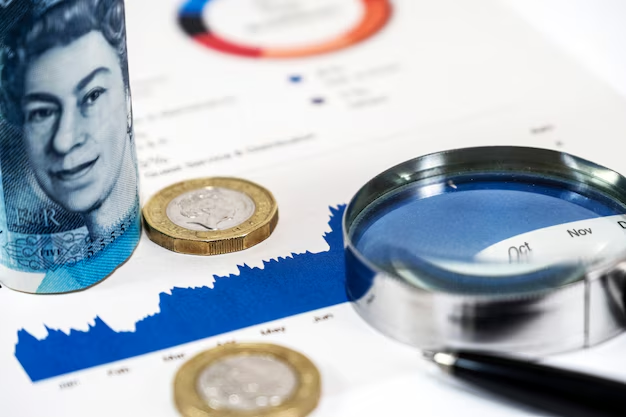Discovering the Power of Dividend Stocks: Your Guide to Investment Success
Investing in dividend stocks is like planting a tree that grows a little every day, providing shade and fruit over time. For many investors, dividend stocks offer a blend of regular income and potential for appreciation, making them a solid cornerstone for a diversified portfolio. In this guide, we will navigate the essentials of investing in dividend stocks, offering insights and strategies that cater to both seasoned investors and novices alike.
📈 Understanding Dividend Stocks
Dividend stocks are shares from companies that pay dividends. A dividend is a portion of a company's earnings distributed to shareholders, typically on a quarterly basis. Let's break down the key aspects of dividend stocks and why they could be a valuable addition to your investment portfolio.
Benefits of Dividend Stocks
- Steady Income: Dividend stocks provide a consistent income stream, which can be particularly appealing to retirees or those seeking regular cash flow.
- Compound Growth: Reinvesting dividends can magnify investment growth over time, akin to the benefits of compound interest.
- Inflation Hedge: Stocks often increase in value in line with inflation, helping preserve purchasing power over the long term.
Types of Dividend Stocks
- Blue-Chip Stocks: These are large, established companies with a history of paying dividends reliably, like Procter & Gamble or Johnson & Johnson.
- Dividend Aristocrats: Companies that have consistently increased their dividends for at least 25 consecutive years, reflecting stability and growth.
- High-Yield Stocks: Stocks with higher-than-average dividend yields, often from sectors like real estate and utilities, but they may carry higher risk.
🔍 Choosing the Right Dividend Stocks
Selecting dividend stocks requires an eye for quality and sustainability. Here's how to approach the selection process more strategically.
Analyzing Financial Health
- Earnings Stability: Companies with steady earnings are more likely to maintain or increase dividends.
- Payout Ratio: This figure indicates what portion of earnings are paid out as dividends. A high payout ratio might suggest risk if earnings do not keep pace.
- Cash Flow: Healthy cash flow ensures that a company can cover its dividends even in economic downturns.
Evaluating Dividend Yield
- Current Yield: This is the annual dividend per share divided by the stock price. A higher yield can mean more income, but it might also signal stock depreciation.
- Sustainability: Look for consistency in dividend payouts and future earnings projections to gauge sustainability.
Considering the Sector
- Stable Sectors: Utilities, consumer staples, and telecom sectors are traditionally stable and often provide reliable dividends.
- Growth Sectors: Tech and healthcare might offer future growth potential, occasionally coupled with dividends.
Diversification
Ensure that your dividend stock portfolio spans various sectors and industries to minimize risk. Diversification can protect against sector-specific downturns and fluctuations.
💼 Building a Dividend Portfolio
Creating a diversified and robust dividend portfolio involves considering your financial goals, risk tolerance, and investment horizon.
Setting Investment Goals
- Income Needs: Determine if you need immediate income or if you're looking to reinvest dividends for growth.
- Time Horizon: Longer horizons can accommodate more risk, while shorter ones necessitate stability.
Allocating Assets
- Balanced Approach: Include a mix of high-yield and stable dividend growth stocks to balance income with potential for appreciation.
- Regular Review: Periodically revisit your portfolio to ensure it aligns with your financial goals and market conditions.
Reinvestment Strategy
- Dividend Reinvestment Plans (DRIPs): Consider enrolling in DRIPs, which automatically reinvest dividends to purchase additional shares, bolstering your investment through compound growth.
Monitoring and Adjusting
Consistently monitor the performance of your dividend stocks and adjust as necessary. Markets and companies evolve, and your portfolio should reflect those changes.
🛠 Tools and Resources for Dividend Stock Investors
Empower your investment decisions with the right tools and resources. Here's a curated list that can assist in evaluating and managing your dividend investments.
Research Platforms
- Stock Screeners: Use them to filter stocks based on dividend yield, payout ratio, and sector.
- Financial News Outlets: Stay updated with market trends and company developments.
Performance Tracking
- Portfolio Management Apps: These apps can track dividends, yield, and performance metrics in real-time.
- Dividend Calendars: Access to schedules of upcoming dividend payouts for timely investment decisions.
Educational Resources
- Investment Courses: Online courses can cover the intricacies of dividend investing and advanced strategies.
- Investor Communities: Engage with forums and online groups for shared insights and experiences.
📝 Summary: Key Takeaways For Investing in Dividend Stocks
Here are some practical tips and insights to keep in mind as you embark on your dividend investing journey:
- 🎯 Align with Goals: Ensure your dividend investment strategy aligns with your financial goals and risk tolerance.
- 💰 Focus on Quality: Prioritize financially healthy companies with sustainable dividends.
- 📊 Diversify Broadly: Spread investments across various sectors to mitigate risks.
- 🔄 Use DRIPs: Consider reinvesting dividends for compound growth.
- 📈 Stay Informed: Regularly review market conditions and company performance.
Investing in dividend stocks requires careful consideration, but with the right approach, they can offer a reliable stream of income and growth potential. Approach your investments with patience and diligence, and you can build a dividend portfolio that withstands market fluctuations while providing financial peace of mind. Redirection to further resources or personalized financial advice can augment understanding, but the foundation lies in clear goals, quality investments, and continuous learning.
